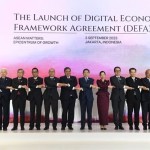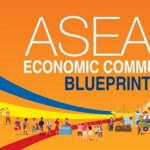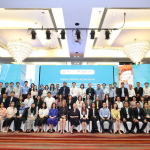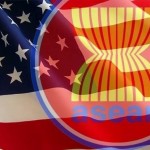Total number of posts 463.
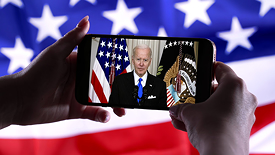 The recently launched US-led IPEF, which includes 13 Asian countries, is not a traditional free trade agreement but its success will depend on whether it offers tangible benefits to participating countries. In this op-ed, Kyle Freeman discusses the future outlook of the IPEF, why its success has been a tenuous prospect from the start, and the implications of its implementation under President Joe Biden’s Executive Order (bypassing the need for Congress approval).
The recently launched US-led IPEF, which includes 13 Asian countries, is not a traditional free trade agreement but its success will depend on whether it offers tangible benefits to participating countries. In this op-ed, Kyle Freeman discusses the future outlook of the IPEF, why its success has been a tenuous prospect from the start, and the implications of its implementation under President Joe Biden’s Executive Order (bypassing the need for Congress approval).
U.S. President Joe Biden recently concluded his inaugural visit to Asia, where during his five-day trip to South Korea and Japan, he announced the launch of the Indo-Pacific Economic Framework (IPEF).
The trip and the announcement come as part of a recent push by the administration to further shape its Asia policy, being preceded by the US-ASEAN Special Summit and followed by the announcement of the administration’s China policy.
Talks on IPEF will now commence between the U.S. and 13 Asian countries. Together potential IPEF participants represent 40 percent of global GDP.
IPEF is designed as a tool to strengthen U.S. economic cooperation with Asian partners and assist the U.S. in re-engagement with the region since the Trump Administration withdrew from Trans-Pacific Partnership (TPP) in 2017.
Pursuing a U.S. worker-centric trade policy similar to the Trump Administration, the Biden Administration has indicated it will not seek to join TPP’s successor the Comprehensive and Progressive Agreement for Trans-Pacific Partnership (CPTPP).
Unlike TPP or CPTTP, IPEF is not a traditional free trade agreement (FTA). Nevertheless, the success of IPEF will depend on factors similar to those involved in an FTA – offering tangible benefits to partners and securing binding commitments for strong policies and standards from partners.
Who will participate in IPEF?
Leaders from 12 Asian countries – Australia, Brunei, India, Indonesia, Japan, Malaysia, New Zealand, the Philippines, Singapore, South Korea, Thailand, and Vietnam – joined the announcement of IPEF either in person or virtually. Since the announcement, Fiji has also joined the initiative.
These potential IPEF participants have so far only agreed to start consultations aimed at later negotiations. Early drafts of the announcement suggested participants would “launch negotiations”, but this was replaced with more flexible language to attract more countries to join at this early stage.
The countries that have joined the initiative can generally be divided by their participation in certain strategic alignments and current multilateral FTAs in Asia.
U.S. treaty allies Japan, South Korea, Australia, and New Zealand, as well as close U.S. partner Singapore, will likely support IPEF and easily be able to meet the high-standard commitments the U.S. would like included in the final framework.
However, the success of IPEF will ultimately be judged on whether India and major developing ASEAN economies such as Indonesia, Thailand, and Vietnam are willing to make significant commitments and sign on to the framework in its final form.
Although a member of the Quadrilateral Security Dialogue (Quad), India has long been unable to settle differences with the U.S. to begin bilateral FTA negotiations and has been unwilling to make commitments necessary to join regional FTAs such as CPTPP or the Regional Comprehensive Economic Partnership (RCEP). “India’s continued rise and regional leadership” is one of 10 core lines of effort cited in the Biden administration’s Indo-Pacific strategy, so the administration will be keen to see India join the final version of IPEF.
Taiwan has indicated an interest in joining IPEF – and 250 members of Congress have called for its inclusion – but it has so far been excluded to secure the participation of other countries reluctant to antagonize China.
The Biden administration has noted China will not be asked to join IPEF, but other interested countries can still apply to join the initiative.
What trade and economic issues will IPEF cover?
IPEF was first introduced by the Biden administration during the annual East Asia Summit in October 2021 and further details were released during the White House’s announcement on the broader Indo-Pacific Strategy in February 2022.
Meant to complement the security-focused Indo-Pacific Strategy, IPEF in its current form revolves around four pillars:
Connected Economy – covering fair and resilient trade, including the seven subtopics of agriculture, climate and environment, competition, digital economy, labor, trade facilitation, and transparency and regulatory practices,
Resilient Economy – covering supply chain resilience;
Clean Economy – covering clean energy, decarbonization, and infrastructure; and
Fair Economy – covering anti-corruption and tax issues.
For the U.S., the U.S. Trade Representative (USTR) will lead negotiations on the “Connected Economy” pillar and the Department of Commerce (DOC) will oversee negotiations on the other three pillars.
Pillars can be negotiated and finalized separately from other pillars. Countries can choose to join any number of the four pillars without being obligated to join other pillars unless they choose to do so. However, once a country has joined a pillar, it is expected to commit to all aspects of that pillar. This differs from traditional FTAs, where countries concurrently negotiate all issues within the agreement until finalized and then are expected to join the final agreement in full or withdraw.
Notably absent from the four pillars and the agenda they will cover are tariff reductions and concessions on greater market access, both typical cornerstones of traditional FTAs.
While IPEF addresses some issues relevant to potential partners, such as digital economy, infrastructure, and decarbonization, progress on these issues will not be seen, particularly by developing economies, as producing the same level of tangible benefits as greater access to the U.S. market. This means the U.S. may have limited leverage to entice partners to join the final framework and to secure meaningful and binding commitments from those who do.
What is the outlook for IPEF?
The Biden administration has indicated IPEF will not be submitted to Congress for approval, as is done with traditional FTAs given Article I, Section 8 of the Constitution grants Congress purview over international trade.
Instead, IPEF will be implemented in whole or in part through Executive Order.
This will allow the Biden administration to freely negotiate IPEF terms and outcomes but suggests outcomes will not contain any obligations that require congressional action. Without Congress codifying new laws to support IPEF obligations, the U.S. will largely be unable to offer potential partners any new commitments beyond existing U.S. law. In essence, the administration will be asking potential partners to commit to doing what the U.S. is already doing, but not offering partners new or additional U.S. commitments.
Negotiations on IPEF are ambitiously proposed to take 18-24 months.
This timeline recognizes the U.S. presidential election at the end of 2024 and seeks to finalize and implement the framework before then to avoid a new administration withdrawing the U.S. from IPEF, as was the fate of TPP. Still, a new administration in 2024 or after could withdraw the U.S. from IPEF given the framework will largely be implemented through Executive Order, which, as compared to a traditional FTA that is ratified by Congress and codified in law, can be easily overturned.
IPEF takes a novel approach in attempting to engage key Asian partners on economic issues given the current political limitations in U.S. trade policy. If the U.S. will not seek to join existing or begin negotiations on new FTAs, IPEF presents an opportunity to see what can be accomplished outside of this traditional tool of trade policy.
However, governments and companies will ultimately only choose to participate in and use IPEF if it offers tangible benefits and strong commitments that are equal to or exceed those already found in existing FTAs in Asia.
Source: China Briefing







